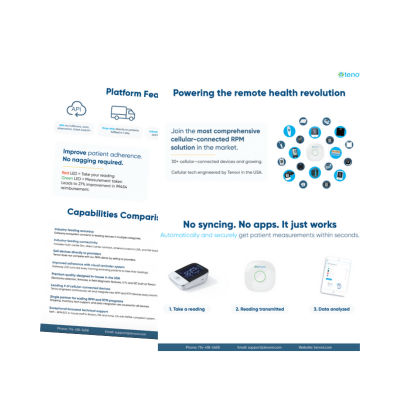The landscape of remote patient monitoring (RPM) is evolving, and the introduction of CPT code 99445 is a pivotal moment for healthcare providers. This new code, finalized by the Centers for Medicare & Medicaid Services (CMS) in the Calendar Year (CY) 2026 Physician Fee Schedule (PFS) Final Rule, brings much-needed flexibility to billing so that reimbursement fits better with real-world patient needs and clinical workflows.
What is CPT Code 99445?
CPT code 99445 is a new Current Procedural Terminology (CPT) code designed to cover the device supply and daily recording/transmission of physiologic data when the monitoring period is shorter than 16 days within a 30-day period. Below is a breakdown of code specifics.
- Service Covered: Initial device supply and daily recording or programmed alert transmission.
- Time Requirement: Data must be collected for a minimum of 2 days and a maximum of 15 days in a 30-day period.
- Relation to Existing Code: It complements the existing CPT code 99454, which continues to cover device supply and transmission for the standard 16–30 days in a 30-day period.
This split directly addresses the long-standing limitation where providers could only bill for device supply if a patient transmitted data for at least 16 days. Now, you can be reimbursed for monitoring shorter-term or episodic needs.
CPT Code 99445: Clinical Flexibility
The addition of CPT code 99445 is significant for patient-centered care, allowing for a more nuanced approach to monitoring. The 2-15 day window supports patients with acute conditions, or those who require only short-term monitoring, for example:
- Post-Discharge Monitoring: Ensuring a smooth and safe transition from a hospital or facility back to home.
- Medication Titration: Closely monitoring a patient’s vital signs for a brief period after starting or adjusting a new medication.
- Episodic Care: Tracking patients who have sudden, short-lived spikes in a parameter (e.g., blood pressure) without requiring month-long monitoring.
Catering to Stable Chronic Patients
For patients with stable chronic conditions, continuous daily data transmission may not always be clinically necessary or feasible. This new code supports:
- Maintenance Monitoring: Patients with well-controlled hypertension or diabetes who benefit from periodic (e.g., weekly) check-ins rather than daily tracking.
- Improved Patient Adherence: Reducing the daily requirement can increase patient buy-in and compliance for individuals who may struggle with the commitment of 16+ days of data transmission.
Billing and Compliance Guidelines for CPT Code 99445, 99454, and 99453
For care services teams, understanding the specific billing requirements is crucial to maintaining compliance and maximizing reimbursement.
| CPT Code | Service Description | Data Transmission Requirement (in a 30-Day Period) | Additive Codes |
| 99445 (NEW) | Device supply and daily recording/transmission | 2–15 days | Cannot be billed with 99454 |
| 99454 (Existing) | Device supply and daily recording/transmission | 16–30 days | Cannot be billed with 99445 |
| 99453 | Initial device setup and patient education (One-time) | N/A | Can be billed with 99445 or 99454 |
Compliance Rules to Follow
- Mutual Exclusivity: CPT code 99445 and 99454 are mutually exclusive. In any given 30-day billing period, you must choose only one based on the total number of days the patient transmitted data (2-15 days vs. 16-30 days).
- Qualifying Device: The RPM device must meet the FDA’s definition of a medical device and be capable of automatically collected and transmitted data. Manual uploads (e.g., texting a picture of a reading) do not qualify.
- Documentation is primary: For audit readiness, ensure your documentation clearly reflects:
-
- The medical necessity for the monitoring period length.
- The device activity logs proving at least 2 days (but fewer than 16 days) of data transmission.
- Details of the corresponding management services (billed separately using 99470, 99457, or 99458).
Tenovi’s Commitment
At Tenovi, we recognize that regulatory changes, such as the introduction of CPT code 99445, are critical for the long-term success of your RPM program. Our connected devices and platform are designed to provide the robust, automated data logging and reporting necessary to meet these precise 2-15 day and 16-30 day thresholds, simplifying your billing workflow and ensuring maximum compliance.
The 2026 CPT updates cement the role of remote patient monitoring as a permanent, flexible, and essential component of modern care delivery. By adopting compliant and efficient RPM workflows now, your practice will be perfectly positioned to leverage these new reimbursement opportunities for broader patient care.
Ready to streamline your billing and expand your remote patient monitoring program using the flexibility of CPT code 99445? Contact Tenovi today for a consultation on optimizing your RPM compliance.




